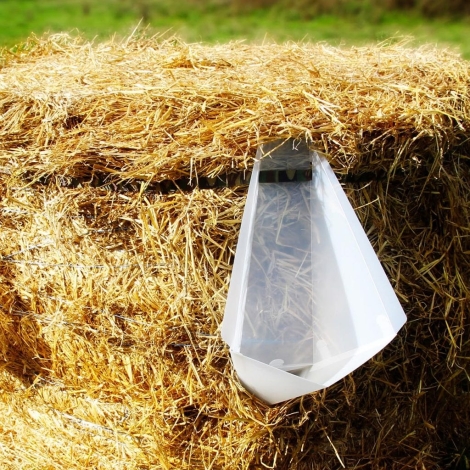Design decisions have created limitations in sanitation products for underserved communities. These decisions affect who uses the products, how they are best used and where. Most sanitation products aim to improve users’ health and comfort while decreasing environmental impact. Some innovations meet the demand for toilets in places where piping infrastructure doesn’t exist or reach all households. Examples include the Laveo Dry Flush Toilet and the Durasan Latrine, both featured in Engineering for Change’s Solutions Library. Other innovations help cities convert waste into fuel, such as the Loowatt Toilet. Or they teach children handwashing practices, as does the Soa Pen. From a bird’s-eye view, sanitation innovations are developed to benefit all of us; closer inspection, however, reveals that, intentionally or not, each product is designed to integrate (or fail to integrate) into specific environments for specific populations.
Differences between handwashing devices show how design decisions impact usability, creating stationary, limited-mobility, and intended-mobility devices.
With the importance of handwashing with soap and water established, most handwashing product designs combine water and soap dispensing. However, if we compare the three handwashing products TippyTap, HappyTap, and Tye Works Advanced Hand Wash System, we see that each product is focused on a different environment or user. Each of these designs involves local water storage rather than requiring connection to a pipe network; as opposed to traditional handwashing station, these solutions do not require built infrastructure for operation. The TippyTap is an open-source product that was designed to be constructed with locally available low-cost materials, while the HappyTap is injection molded and sold at market price. Therefore, while the first product can be constructed anywhere, the second requires a manufacturing plant with injection molding equipment. Finally, each of the three solutions accommodates a different level of mobility. Whereas the TippyTap is constructed as a stationary station, the HappyTap and Tye System can both be moved by the user. But whereas the plastic HappyTap is more easily prone to damage, limiting its mobility, the Tye System was designed to be portable and durable. These differences show how design decisions impact usability, creating stationary, limited-mobility, and intended-mobility devices respectively.
It’s crucial to create innovations that are open to critique and encourage an iterative design process that learns from past lessons in the field.
Then if we investigate toilets, we find many innovations that reduce water usage to create a dry-toilet system. Three of these solutions, the L’uritonnoir Dry Urinal, Loowatt Toilet, and Laveo Dry Toilet, each eliminated the traditional water-flush from their designs to both reduce water usage and to better enable waste management. However, the intended users of these technologies vary greatly. For instance, while the Loowatt and Laveo toilets are both western toilets intended for private use for any user within a constructed superstructure, the L’uritonnoir focuses on primarily male users in outdoor, more public setting settings. Therefore, while each of these products could be used in a household setting, the urinal would not meet specific cultural norms related to private toilet-use. Then while both the Loowatt and Laveo toilet seal waste in bags to prevent user unsanitary contact, the Loowatt waste-management system recycles waste into fertilizer or biogas while the Laveo system involves disposing of waste into landfills. The advantages of Loowatt’s recycling is clear because waste is put through a value-adding secondary process, but this recycling is only possible in a community or city where collection and processing systems and infrastructure are present. Therefore, we can see that the Laveo would be marketed at individual users while the Loowatt would be pushed as a community-wide solution, to ensure that running processing systems is economically viable.
Design decisions impose limitations on products, and that is an axiom that is not unique to the sanitation sector. We should keep that reality in mind as we design new products. Our designs can continue to meet the needs of specific populations in specific environments, or in some cases we can move toward designing single systems that apply to broader applications. With such a range of possibilities, it can be too easy to design products that don’t meet the intended users’ needs or that don’t work in the intended environment. The same can be said of the choice that practitioners face when shopping for products that make sense in the places where they work. Pitfalls abound, but there are safety nets in product design for global development: research and the advice and opinions of others. It’s crucial to create innovations that are open to critique and encourage an iterative design process that learns from past lessons in the field.

